TRENDING
Natural Phenomenons You Won’t Believe
Published
4 years agoon
The world around is filled with spectacular, sometimes even alien-looking natural phenomena that can come in the form of odd shaped clouds, unexplained balls of electric current, fish who make art, and glowing beaches.

There is not a more complete archive of earth’s fascinating natural phenomena than that which you are about to experience. Enjoy the beauty, destruction and infinite awes of planet earth.
Lenticular Clouds
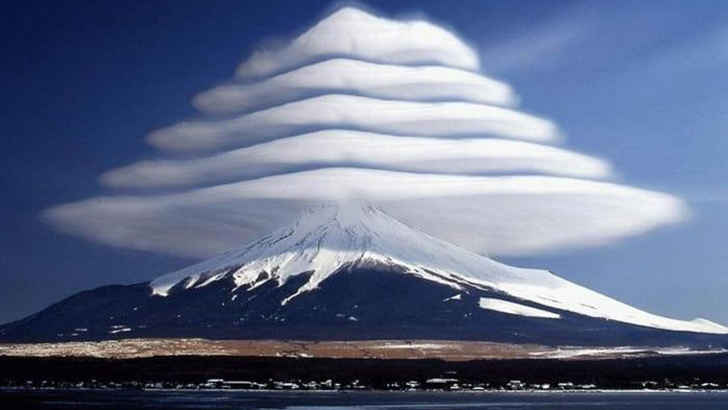
Stationary lens shaped clouds that form in the troposphere. Normally perpendicular in alignment to the wind direction. Because of their shape, they have been offered as an explanation for some UFO sightings.
Blood Falls
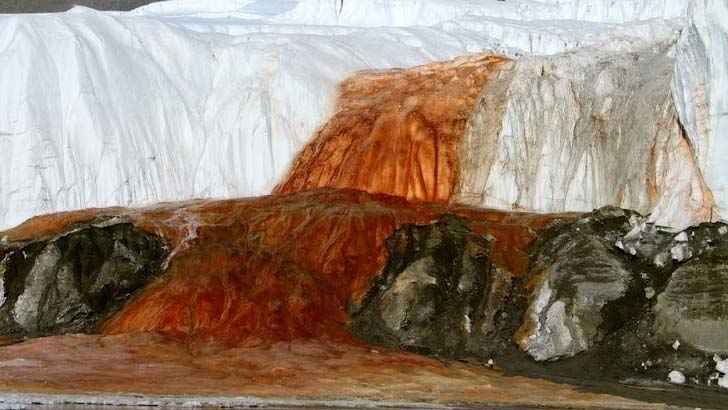
Blood Falls is an outflow of an iron oxide tainted plume of saltwater, flowing from the tongue of Taylor Glacier onto the ice covered surface of West Lake Bonney in East Antarctica. Iron-rich hypersaline water sporadically emerges from small fissures in the ice cascades. The reddish deposit was first discovered in 1911.
Blue Lava

At Indonesia’s Kawah Ijen Volcano, otherwise normal (red/orange) colored lava is accompanied by extremely high quantities of sulfuric gases. The sulfur burns readily when it is ignited by the lava and exposed to fresh air. The bright blue color of the sulfurs flames give the appearance of blue lava.
Brinicles
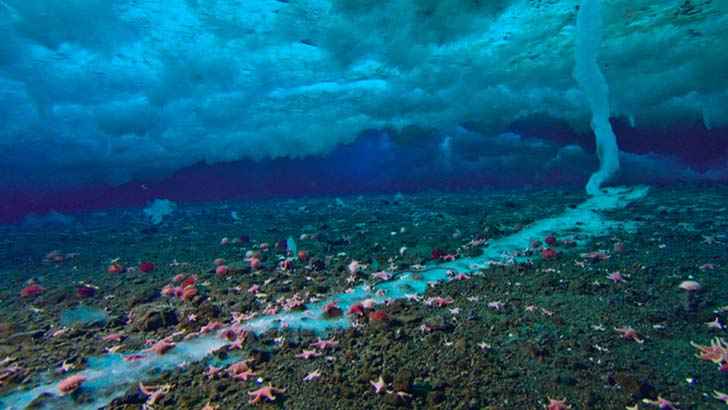
A Brinicle is an ice stalactite, it forms beneath sea ice when a flow of extremely cold, saline water is introduced to an area of ocean water. Under the proper conditions a Brinicle can reach down to the sea floor.
Cocooned Trees

Flood waters in Pakistan forced spiders to dwell in trees for an extended period of time to escape from being submerged. As a result the trees have become completely entangled in spider webs. Britain’s department for international development reports that the areas where the spiders have occupied the trees have seen far fewer cases of malaria spreading mosquitoes.
Columnar Basalt
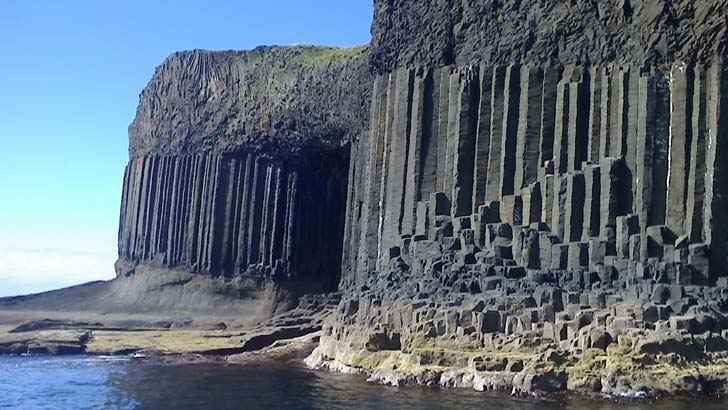
During the cooling of a thick lava flow, contractual joints or fractures form. If a flow cools relatively rapidly, significant contraction forces build up. The lava flow can not easily accommodate shrinking in the horizontal direction, and the extensive fracture network that develops results in the formation of columns.
Christmas Island Red Crab Migration
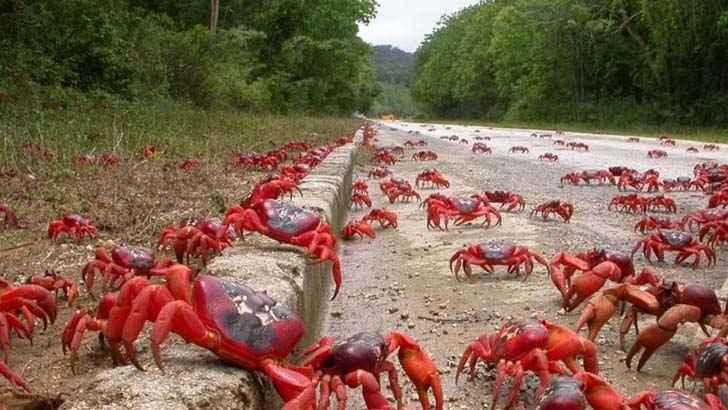
The Christmas Island Red Crab is well known for its annual migration to the sea to lay their eggs in the ocean. It’s been estimated that 43.7 million adult red crabs once lived on Christmas Island, a relatively small area. For most of the year, red crabs can be found within the forests, however each year they migrate to the coast to breed.
Puffer Fish Circles

Underwater cameras observed an unlikely artist creating these works of art. Puffer fish use their fins to carve the circular ridges. Attracted by the grooves and ridges, female Puffer fish would find their way to the male Puffer fish that created the masterpiece, made with them, and laid their eggs. The male Puffer also cracks small seashells into the structure, which are said to have vital nutrients for the newborns as they hatch.
The Door To Hell
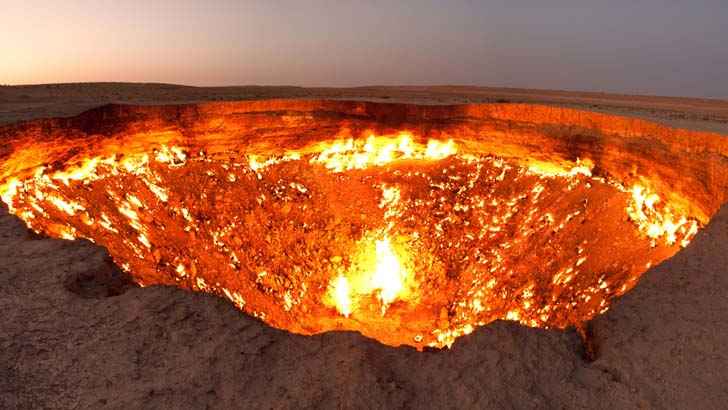
A 230 foot wide crater in the middle of the desert near the village of Deweze is the result of a team of Soviet scientists who set up a drilling platform to look for natural gas reserves. The rig collapsed, and the researchers set the crater on fire out of fear of spreading poisonous methane gas. They hoped the crater would burn out in a few hours, that was more than 40 years ago.
Fire Rainbow
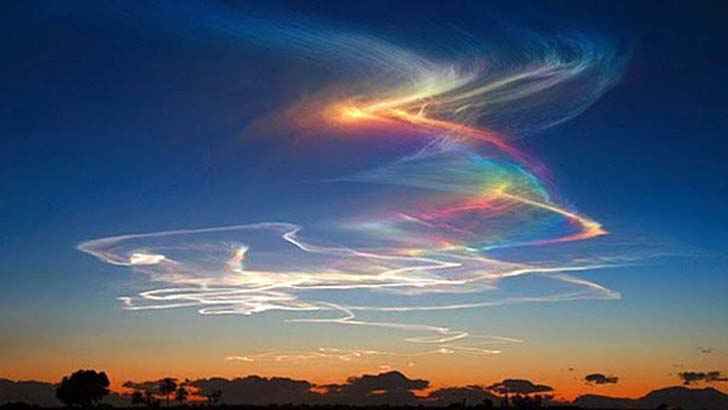
An optical phenomenon that belongs to the family of ice halos formed by the refraction of the sun or moonlight in plate shaped ice crystals suspended in the atmosphere.
Fire Devil
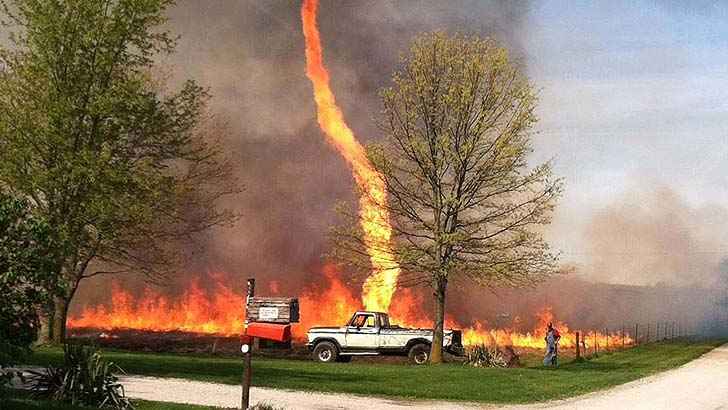
A whirlwind induced by a fire and often made up of flame or ash. A fire devil consists of a core, the part that is on fire, and an invisible rotating pocket of air. It can reach up to 2,000 Fahrenheit. Fire devils are created when a wildfire or firestorm creates its own wind, which can turn into a spinning vortex of flame.
Frost Flowers
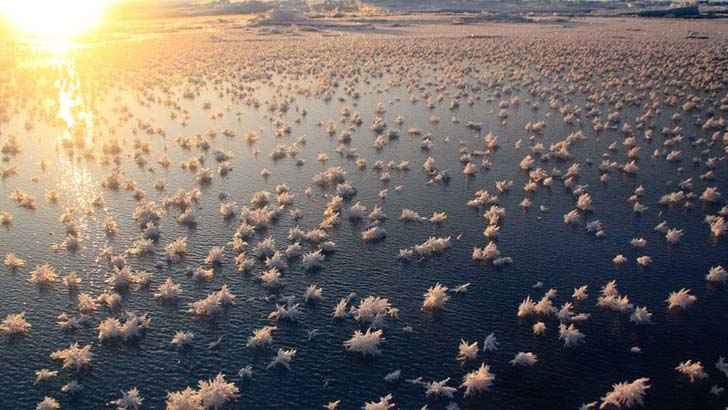
A frost flower is formed when thin layers of ice are extruded from long-stemmed plants in autumn or early winter. The thin layers of ice are often formed into exquisite patterns that curl into “petals” that resemble flowers.
Frozen Methane Bubbles
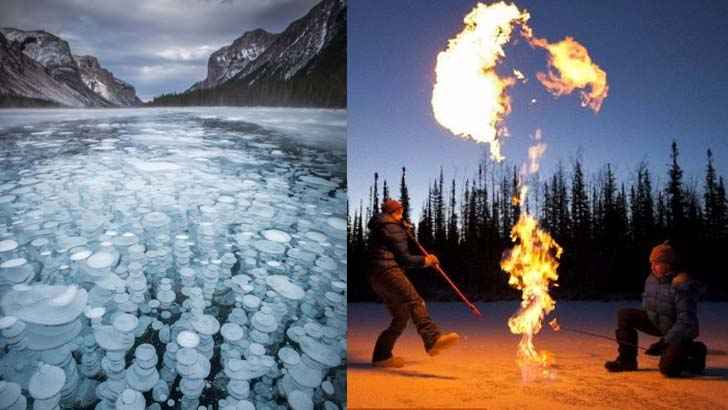
The bubbles form beneath the frozen surface of Lake Abraham in Alberta Canada. Methane bubbles form in bodies of water when dead organic matter sinks to the bottom and is consumed by bacteria at the bottom. The waste that follows consumption by the bacteria is the methane which floats to the surface. Due to the quick freezing of the surface water, the bubbles of methane become frozen in time.
Geyser Blister

Moments before a geyser erupts, all of its boiling water forms a massive spherical blister at its opening.
Bioluminescent Plankton
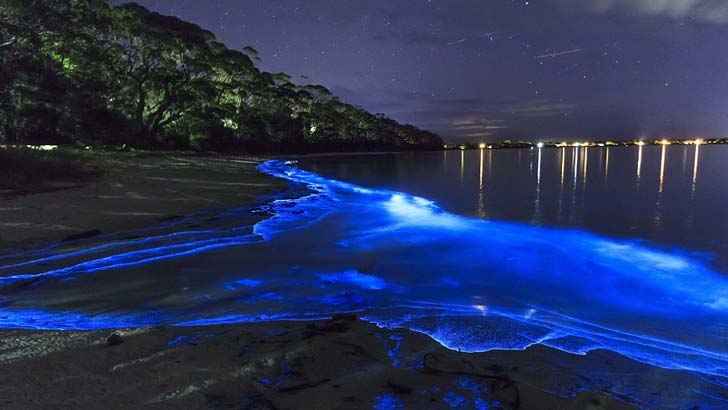
The plankton glow when they are moved because of stress. The bioluminescence is used as a defense mechanism to draw the organisms predators in and disorient it.
Argan Tree Goats
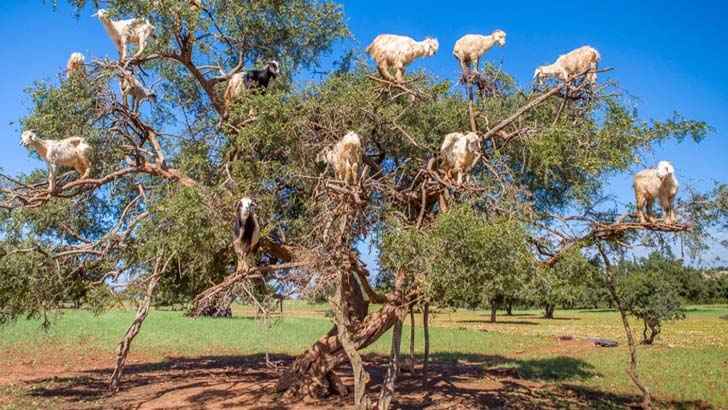
Argan is one of the oldest trees in the world. Today it can be found only in an area of approximately 8,000 square kilometers in the southwest of Morocco. Argan grows to 8–10 m high and lives up to 200 years. The people of this area accumulated wealth by cultivating Argan oil, they used the additional funds to buy goats, which have become somewhat problematic because they climb the trees and eat the fruits and leaves of the trees which stunts their growth.
Green Flash
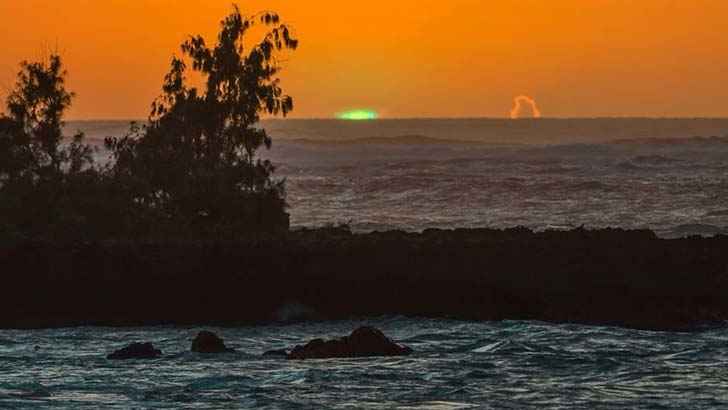
An optical phenomena that sometimes occur right before sunset or right after sunrise. When the conditions are right, a green spot is visible above the upper rim of the disk of the sun. The green appearance usually lasts for no more than a second or two. Rarely, the green flash can resemble a green ray shooting up from the sunset or sunrise point. Green flashes occur because the atmosphere can cause the light from the sun to separate out into different colors.
Hair Ice

A type of ice that forms on dead wood and takes the shape of fine, silky hair. It is somewhat uncommon. The silky smooth ice crystals maintain their shape for hours, sometimes days. The fungus Exidiopsis effusa is key in the formation of the Hair Ice. The fungus shapes the ice into the fine hairs through an unknown mechanism and provides a re-crystallization inhibitor similar to antifreeze proteins to maintain it.
Maelstroms

Otherwise known as a Whirl Pool, Maelstroms are a body of swirling water that is formed by the meeting of opposing currents. The Maelstrom of Saltstraumen is the earth’s strongest maelstrom, and reaches speeds of 25 mph. Navigation is dangerous and only a small slot of time is available for large ships to pass through.
Mammatus Cloud
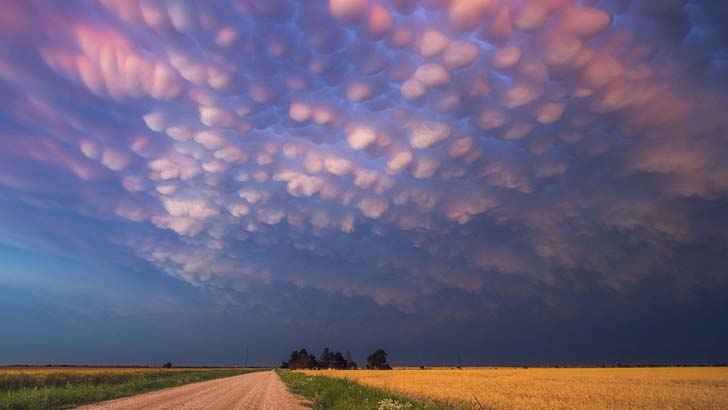
A cellular pattern of pouches hanging underneath the base of a cloud. Mamma, is a cloud supplementary feature. Mammatus clouds are often harbingers of a coming storm or other extreme weather. There exist many different types of Mammatus clouds, with distinct properties and occurring in different environments.
Monarch Butterfly Migration

The Monarch Butterfly migration has been called “one of the most spectacular natural phenomena in the world”. Starting in September and October, eastern/northeastern populations migrate from southern Canada and the United States to overwintering sites in central Mexico where they arrive around November. The Monarchs who made the initial trip die off, and the ones that make the return trip are the offspring which have not previously made the voyage. The fact that the offspring know where to go is part of what makes the migration so unique.
Morning Glory Clouds
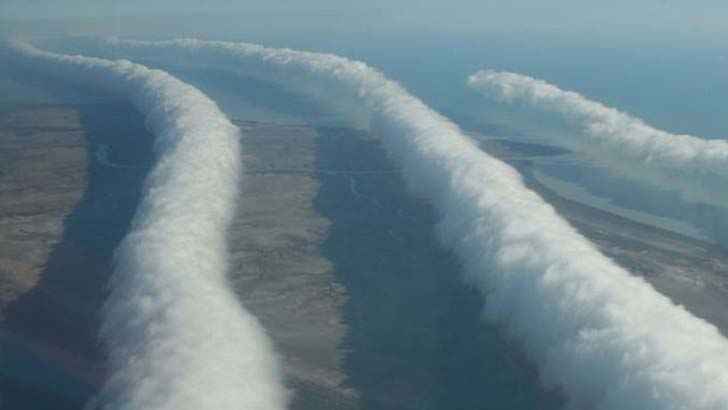
A rare meteorological phenomenon consisting of a low-level atmospheric solitary wave and associated cloud, occasionally observed in different locations around the world. The wave often occurs as an amplitude-ordered series of waves forming bands of roll clouds. The southern part of the Gulf of Carpentaria in Northern Australia is the only known location where it can be predicted and observed on a more or less regular basis due to the configuration of land and sea in the area.
Penitente
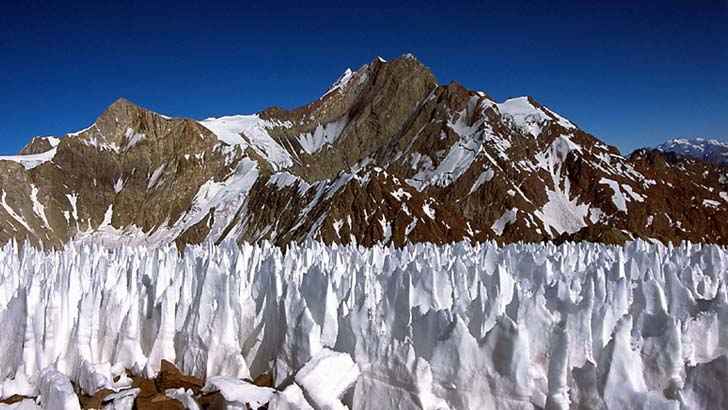
Snow formations found at high altitudes. They take the form of elongated, thin blades of hardened snow or ice, closely spaced and pointing towards the general direction of the sun. These spires of snow and ice grow over all glaciated and snow-covered areas in the Dry Andes above 13,120 feet. They range in size from a few centimetres to over 5 metres or 16 feet. Penitentes were first described in scientific literature by Charles Darwin in 1839.
Aurora Borealis
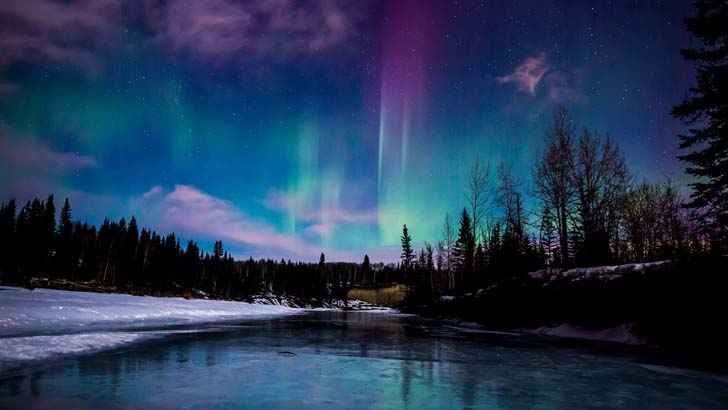
A natural light display in the sky, predominantly witnessed in the high latitude arctic regions. Auroras are produced when the magnetosphere is sufficiently disturbed by the solar wind that the trajectories of charged particles in both solar wind and magnetospheric plasma precipitate them into the upper atmosphere.
Ball Lightning
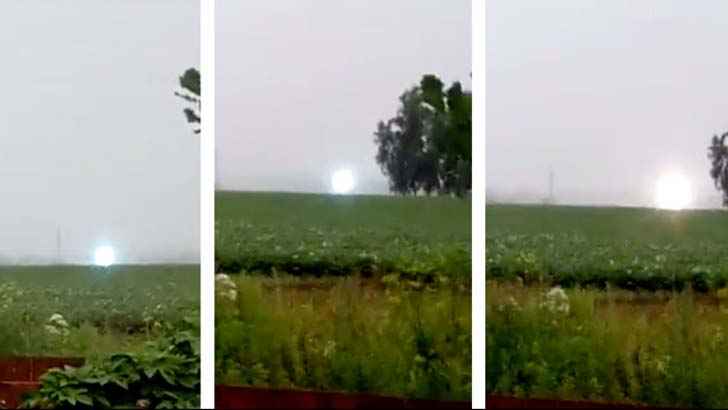
Ball Lightning is an unexplained, extremely rare, electrical atmospheric phenomenon. The term refers to spherical objects that vary from pea sized to several meters in diameter. Ball lightning lasts considerably longer than a split second lightning flash and some claim the ball eventually explodes and is followed by the smell of sulfur. Scientific data on Ball Lightning is very scarce due to its unpredictability and infrequent occurrence.
Rainbow Trees
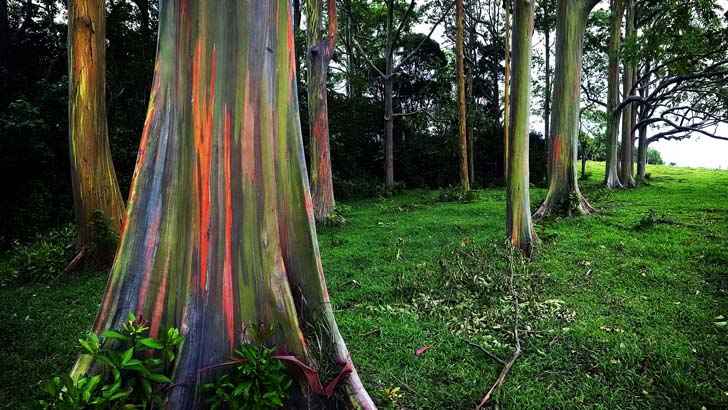
Eucalyptus deglupta is a tall tree, commonly known as the rainbow eucalyptus, Mindanao gum, or rainbow gum. The unique multi-hued bark is the most distinctive feature of the tree. Patches of outer bark are shed annually at different times, showing a bright green inner bark. This then darkens and matures to give blue, purple, orange and then maroon tones. The previous season’s bark peels off in strips to reveal a brightly colored new bark below. The peeling process results in vertical streaks of red, orange, green, blue, and gray.
Sailing Stones
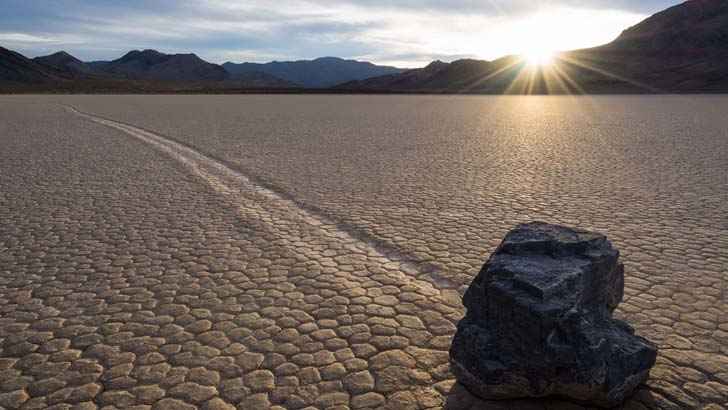
A geological phenomenon where rocks move and inscribe long tracks along a smooth valley floor without human or animal intervention. Instead, rocks move when large ice sheets a few millimeters thick floating in an ephemeral winter pond start to break up during sunny days. These thin floating ice panels, frozen during cold winter nights, are driven by wind and shove rocks at up to 5 m/min.
Sandstorm

A meteorological phenomenon common in arid and semi-arid regions. Dust storms arise when a gust front or other strong wind blows loose sand and dirt from a dry surface. Particles are transported by saltation and suspension, a process that moves soil from one place and deposits it in another.
Seafoam

A type of foam created by the agitation of seawater, particularly when it contains higher concentrations of dissolved organic matter including proteins, lignins, and lipids derived from sources such as the offshore breakdown of algal blooms. These compounds can act as surfactants or foaming agents. As the seawater is churned by breaking waves in the surf zone adjacent to the shore, the presence of these surfactants under these turbulent conditions traps air, forming persistent bubbles that stick to each other through surface tension.
Fallstreak Hole
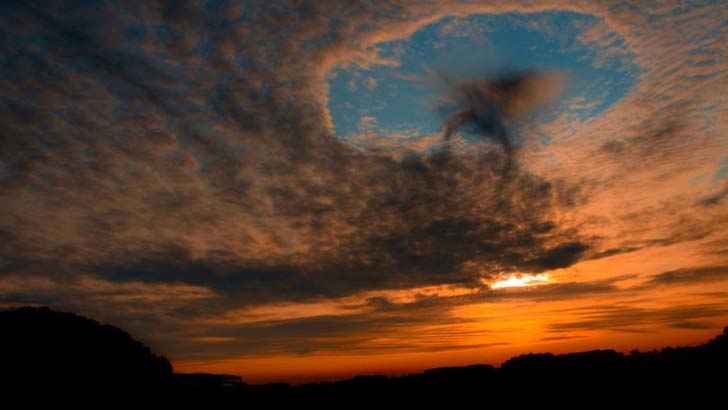
A large gap, usually circular or elliptical, that can appear in cirrocumulus or altocumulus clouds. Such holes are formed when the water temperature in the clouds is below freezing but the water, in a supercooled state, has not frozen yet due to the lack of ice nucleation. When ice crystals do form, a domino effect is set off due to the Bergeron process, causing the water droplets around the crystals to evaporate: this leaves a large, often circular, hole in the cloud.
Snow Roller
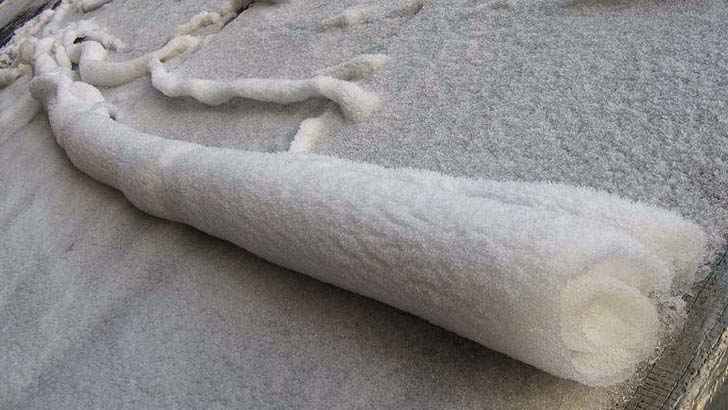
A rare meteorological phenomenon in which large snowballs are formed naturally as chunks of snow are blown along the ground by wind, picking up material along the way, in much the same way that the large snowballs used in snowmen are made. They can be as small as a tennis ball, but they can also be bigger than a car. Unlike snowballs made by people, snow rollers are typically cylindrical in shape, and are often hollow since the inner layers, which are the first layers to form, are weak and thin compared to the outer layers and can easily be blown away, leaving what looks like a doughnut or Swiss roll.
Moeraki Boulders

Usually large and spherical boulders lying along a stretch of Koekohe Beach on the wave-cut Otago coast of New Zealand between Moeraki and Hampden. They occur scattered either as isolated or clusters of boulders within a stretch of beach where they have been protected in a scientific reserve.
Supercell
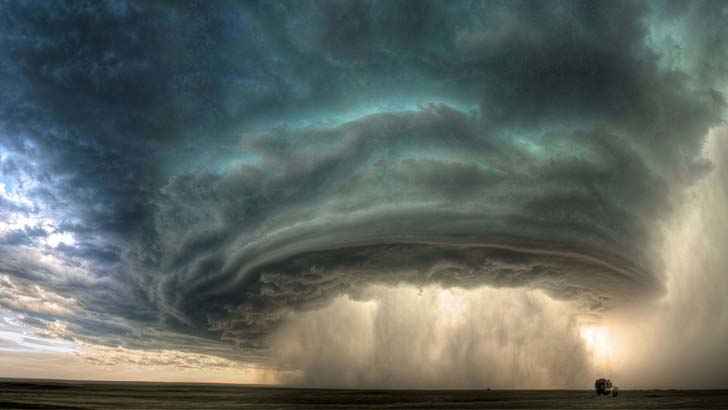
A thunderstorm that is characterized by the presence of a mesocyclone: a deep, persistently rotating updraft. Supercells are often isolated from other thunderstorms, and can dominate the local weather up to 20 miles away. Supercells can be any size large or small, low or high topped. They usually produce copious amounts of hail, torrential rainfall, strong winds, and substantial downbursts. Supercells are one of the few types of clouds that typically spawn tornadoes within the mesocyclone, and can form anywhere in the world.
Dirty Thunderstorm
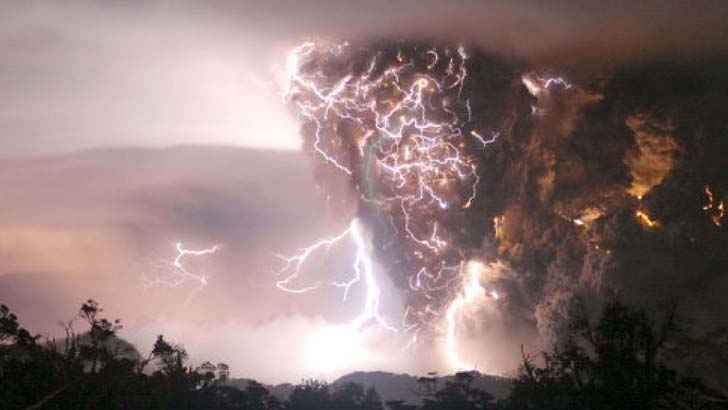
A weather phenomenon that is related to the production of lightning in a volcanic plume. electrical charges are generated when rock fragments, ash, and ice particles in a volcanic plume collide and produce static charges, just as ice particles collide in regular thunderstorms. Volcanic eruptions are sometimes accompanied by flashes of lightning. However, this lightning doesn’t descend from storm clouds in the sky. It is generated within the ash cloud spewing from the volcano, in a process called charge separation.
Water Spouts

An intense columnar vortex usually appears as a funnel-shaped cloud that occurs over a body of water. In the common form, it is a non-supercell tornado over water. While it is often weaker than most of its land counterparts, stronger versions spawned by mesocyclones do occur. Most waterspouts do not suck up water; they are small and weak rotating columns of air over water.
More From Auto Overload
-


Most Epic Wedding Dresses Of All Time
-


‘80s Fitness Stars In Their Prime Vs. Where They Are…
-


Wonderous Nature Photos
-
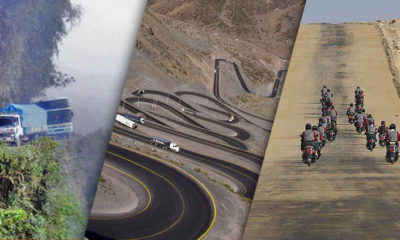

The Most Spectacular Roads In The World
-


Celebs Who Are Actually Related
-


Beautiful Celebrity Tattoos
-


Vintage Postcards That Capture Women’s Beauty From 100 Years Ago
-


Tacky Kitchen Decor Mistakes To Avoid
-


Obama’s Post Presidency Adventures
-


Most Iconic Disney Villains of All Time
-


The Greatest Bands Of All Time
-


Hacks Guaranteed To Improve Your Life

